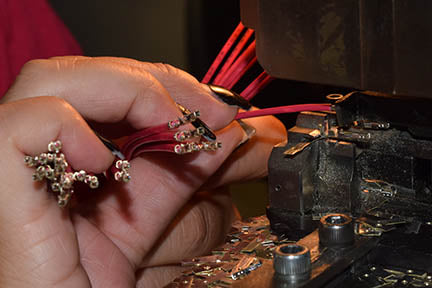Wire harness assembly process is one of the few remaining manufacturing processes that is more efficiently done by hand, rather than automation. This is due to the variety of processes that are involved in the assembly. These manual processes include:

- Installing terminated wires in various lengths
- Routing wires and cables through sleeves and conduits
- Taping breakouts
- Conducting multiple crimps
- Binding the components with tape, clamps or cable ties
Because of the difficulty involved in automating these processes, manual production continues to be more cost-effective, especially with small batch sizes. This is also why harness production takes longer than other types of cable assemblies. Production can take anywhere from a few days to several weeks. The more complicated the design, the longer production time is required.
However, there are certain portions of pre-production that can benefit from automation. These include:
- Using an automated machine to cut and strip the ends of individual wires
- Crimping terminals on one or both sides of the wire
- Plugging wires pre-fitted with terminals into connector housings
- Soldering wire ends
- Twisting wires
Post time: Mar-27-2023



